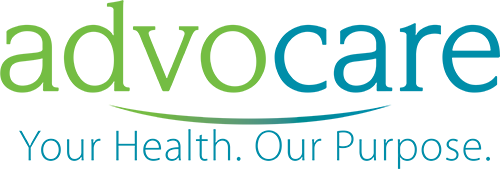A lot of people remember their scoliosis screenings from childhood. Your doctor did them, and chances are your physical education teacher did them as well. Scoliosis is still a concern for your children today.
Statistically, some degree of scoliosis is diagnosed in approximately 3 to 4% of adolescents. Without proper medical intervention, it can affect a child’s posture, self-esteem, long-term development, and overall quality of life.
What Is Scoliosis?
During the growth phase of adolescence, it is the lengthening of the long bones of the legs and the bones of the spine that achieves the change in height. In scoliosis, an individual’s spine grows with an unnatural rotation or curvature leading to a side to side bending of the back. Because it is a growth-related disorder, it most often starts to develop during the early stages of pubertal rapid growth. Statistically, scoliosis affects girls more often than it does boys.
Many children who develop scoliosis will only have a mild deviation. This generally does not require treatment. Scoliosis should not be confused with poor posture or the rolling in of one’s shoulders. Poor posture is reversible; scoliosis is not (without treatment). More severe cases of scoliosis can be associated with pain, poor self perception, and even breathing problems.
What Are The Different Types Of Scoliosis?
There are three different types of scoliosis. Each has its own characteristics which may influence the necessary treatment plan your pediatrician recommends.
Idiopathic Scoliosis
As the most common form of scoliosis, idiopathic scoliosis accounts for roughly 80% of cases. Common symptoms include uneven shoulders, one shoulder blade protruding more than the other, as well as ribs more prominent on one side. It can also cause an uneven shape of the waistline as well as noticeable differences in hip height.
Congenital Scoliosis
This causes abnormalities in the bones of the spine which in turn causes a curve in the spine and the surrounding structures, and is present very early in childhood.
Neuromuscular Scoliosis
This rare form of the condition is caused by disorders that affect the brain, as well as the spinal cord and related muscular systems. It typically causes the muscles and surrounding tissues to be too tight or unable to support the weight of the body, which leads to progressive spinal curvature. Many people diagnosed with neuromuscular scoliosis also have other related conditions such as cerebral palsy, muscular dystrophy, spinal muscular atrophy, or spina bifida
How Is Scoliosis Detected?
Most public school districts and many private schools actively screen students for scoliosis in fifth grade and again in eighth grade. This is an age where most children start to experience the rapid growth of puberty, and scoliosis may become evident. Pediatricians also regularly perform scoliosis screening. Early detection of scoliosis allows for improved treatment strategies and treatment goals.
Some of the signs of scoliosis that examiners look for include:
- Uneven shoulders
- One-shoulder blade being significantly more prominent than the other
- Their head not centered directly over the hips
- One hip appearing significantly higher than the other
- One side of the waist significantly more curved than the other
- Their rib cage more prominent on one side
- Noticeably leaning to one side despite trying to stand up straight
If you should notice any of these potential symptoms, or your child has a diagnosed neuromuscular condition, contact your pediatrician. As scoliosis tends to run in families, it is especially important to be alert for scoliosis if you have a positive family history.
How Is Scoliosis Diagnosed?
If you, your child’s pediatrician, or the school notice potential signs of scoliosis and it is severe, your child will be referred to a specialist for further diagnosis and treatment. This usually starts with taking an X-ray image of your child’s back as well as taking measurements of the spine to determine the extent of the deviation or curvature.
Can Scoliosis Be Treated In Children?
The scoliosis treatment strategy recommended by your physician will be based on the degree of deviation in your child’s spine as well as other related structures. The child’s age and development may also be factors in determining the best course of action.
With a mild case of scoliosis, the physician may start by monitoring the degree of deviation as well as assessing if the curvature is worsening with time. This is more of a concern with curves in the upper spine. Approximately 90% of cases of scoliosis require only monitoring and no further treatment.
If the scoliosis is severe and your child has more potential to grow, your physician might recommend using a back brace as a first step in treating scoliosis. This treatment strategy is designed to prevent spinal curves from worsening, though a back brace cannot correct an existing spinal curve. It will be custom made to exactly fit your child, and every effort will be made to minimize the back brace’s appearance under their clothes. This helps to encourage consistent use.
Your child will need to wear the brace for 16 to 18 hours a day, and will likely need to use the back brace until they are done growing. Approximately 90% of those treated with bracing require no further treatment of their scoliosis.
Does Scoliosis Require Surgery?
Rarely, in very pronounced cases, scoliosis may require surgery. This is especially true of cases involving neuromuscular scoliosis. Surgery can improve a severe curve and alleviate postural and respiratory problems associated with marked curvature. Surgery will then be followed up with routine physical therapy.

